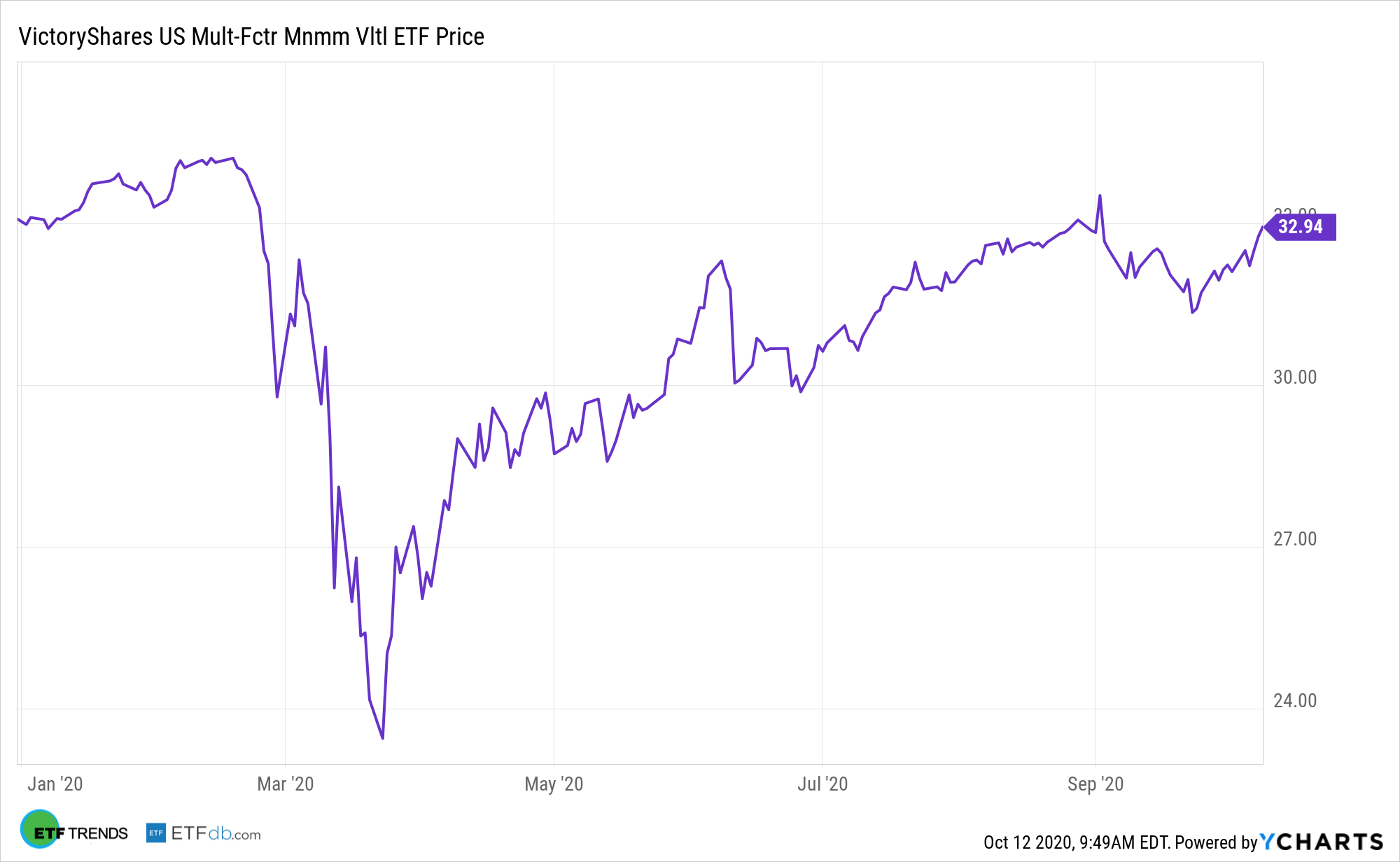Low volatility is a popular investment factor, but many of the exchange traded funds offering exposure to it are old in their approaches. Those looking for a more modern bet on reduced volatility should consider the VictoryShares US Multi-Factor Minimum Volatility ETF (VSMV).

VSMV follows the Nasdaq Victory US Multi-Factor Minimum Volatility Index, providing the fund with a potentially superior mousetrap than simply owning a basket of the lowest volatility equities – an approach that has plenty of drawbacks. What makes VSMV appealing relative to older, competing strategies is that it focuses on factors beyond low volatility.
“VSMV’s index goes further than rival benchmarks by plugging earnings quality, momentum, profitability, and valuation into the equation,” according to Nasdaq. “The inclusion of earnings quality and valuation into securities selection process is important because some older low volatility funds can include stocks with less-than-desirable earnings trends and because less volatile stocks often command premiums relative to the broader market. It’s the price investors pay for being defensive.”
VSMV and Value: A Fruitful Combo?
VSMV starts with a universe of mid- and large-cap U.S. companies taken from the Nasdaq US Large Mid Cap Index and then ranking the companies using a number of proprietary fundamental factors like dividend yield, sales growth, and other financial metrics identified by a quantitative multi-factor selection process to identify those most likely to outperform the broader market. Furthermore, the underlying index uses an optimization tool to weight individual securities to minimize absolute volatility.
“VSMV’s multi-factor approach is relevant for another reason: Factor timing its hard. Really hard. For the 13 years ending 2019, low volatility was the best-performing factor on five times. It was also one of the three worst factors on seven occasions, including in three of the past four years,” according to Nasdaq.
By focusing on a multi-factor approach, VSMV can hone in on holdings that exhibit the right factor exposures, such as quality, momentum and profitability, but compared to other products, also take into consideration valuation. This approach helps, particularly when traditional low volatility sectors and stocks are “bid up” by the market at times.
“Some early iterations of low-volatility strategies accomplish this by simply screening for the least volatile stocks. The drawback of this approach is that these portfolios often have large sector and industry concentrations, making them less appealing to investors looking for diversified market exposure,” according to Nasdaq Global Information Services.
For more on innovative portfolio ideas, visit our Nasdaq Portfolio Solutions Channel.
The opinions and forecasts expressed herein are solely those of Tom Lydon, and may not actually come to pass. Information on this site should not be used or construed as an offer to sell, a solicitation of an offer to buy, or a recommendation for any product.

